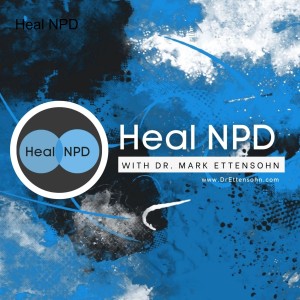
Friday Oct 25, 2024
Without Emotional Skin: Understanding Borderline-Level NPD
In this episode, Dr. Ettensohn draws on psychodynamic dimensional models of personality development to describe narcissism and NPD at the borderline level.
Characterized by identity diffusion, blurred boundaries, and disrupted internal experience, borderline personality organization represents an "in between" level where the perceptions of the self and others float in and out of clear focus.
This episode reviews the important concepts of personality style vs. organization, helping the viewer to understand what a personality disorder actually is and why all personality disorders share common features. It discusses the developmental arrests thought to underlie borderline organization and describes common defense mechanisms that characterize this level of object relations. Borderline-level NPD is then discussed using these concepts.
The episode concludes with a discussion of treatment.
References:
Berney, S., de Roten, Y., Beretta, V., Kramer, U., & Despland, J.-N. (2014). Identifying psychotic defenses in a clinical interview. Journal of Clinical Psychology, 70(5), 428–439.
Clarkin, J. F., Cain, N. M., & Lenzenweger, M. F. (2018). Advances in transference-focused psychotherapy derived from the study of borderline personality disorder: Clinical insights with a focus mechanism. Current Opinion in Psychology, 21, 80-85. http://dx.doi.org/10.1016/j.copsyc.2017.09.008
Di Giuseppe, M., & Perry, J. C. (2021). The hierarchy of defense mechanisms: Assessing defensive functioning with the Defense Mechanisms Rating Scales Q-Sort. Frontiers in Psychology, 12:718440 https://doi.org/10.3389/fpsyg.2021.718440
Kernberg, O. F. (1970). Factors in the psychoanalytic treatment of narcissistic personalities. Journal of the American Psychoanalytic Association, 18, 51- 85.
Kernberg, O. F. (1984). Severe personality disorders: Psychotherapeutic strategies. New Haven: Yale University Press.
Lingiardi, V., & McWilliams, N. (Eds.). (2017). Psychodynamic diagnostic manual: PDM-2 (2nd ed.). New York: Guilford Press.
McWilliams, N. (2011). Psychoanalytic diagnosis: Understanding personality structure in the clinical process (2nd ed.). Guilford Press. Purchase Unmasking Narcissism: A Guide to Understanding the Narcissist in Your Life here: https://amzn.to/3nG9FgH
LISTEN ON APPLE PODCASTS: https://rb.gy/cklpum
LISTEN ON GOOGLE PODCASTS: https://rb.gy/fotpca
LISTEN ON AMAZON MUSIC: https://rb.gy/g4yzh8
VISIT THE WEBSITE: https://www.healnpd.org
*A note about the title: The title is a partial quote from BPD specialist Marsha Linehan, describing borderline personality disorder. I am aware of her original intent to describe that specific patient population. I also use the quote in the video to describe the emotional vulnerabilities that necessitate splitting. Although she was describing BPD specifically, I feel the quote also works for borderline organization in general. The intense emotional vulnerabilities and exposure to unprocessed experience reflect the absence of moderating internal capacities - "skin" so to speak.
No comments yet. Be the first to say something!